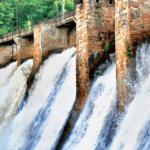Overview
Agriculture is the mainstay of Nepal’s economy as more than 60% of the population continues to be dependent on it for their daily livelihood. The contribution of the agriculture sector towards Gross Domestic Product (GDP) stands at 20.26% in FY 2021/22, with a growth rate of 7.8% in the same period. Although the sector has shown robust growth in the past, its contribution to GDP has decreased by more than 10% in the past decade. The domestic agriculture practice is based on traditional tools and techniques which explains Nepal’s poor agricultural productivity when compared to other South Asian countries.
Digitalization has revolutionized many sectors by making activities effective and efficient. In agriculture, digitization means farmers obtain personalized and relevant agricultural information along with various agricultural services, by using various digital devices. Many countries around the world have been able to improve the performance of agriculture by employing digital technology. To benefit from the technology, the Government of Nepal has taken various initiatives to modernize the sector. Practices range from disseminating information using a traditional method like radio channels while also using digital platforms on smart devices. To improve market access of small farmers, various e-commerce platforms have been launched which connect farmers directly to the end consumers.
The Government of Nepal has formulated and is implementing Digital Nepal Framework, which aims to digitalize the overall economy, including the agriculture sector. By utilizing digital technologies in digital tools sharing, digital disbursement of subsidies, smart irrigation projects, smart livestock management, Tele vet medical facility, and Agriculture Product Quality Tracking Systems to improve crop yield and farm productivity. However, due to inadequate digital literacy and access to a digital device, the benefits of existing digital facilities are limited in Nepal. Therefore, this article will review the impact and feasibility of the existing state of digitalization in the agriculture sector in Nepal and potential areas of improvement.
Value Chain
The existing value chain that connects farmers to end consumers is intermediated by different layers of agents who procure from small farmer’s wholesales and then sell the product in regional or central agriculture markets. Due to a lack of direct market access, small farmers in far-flung regions are unable to fully capitalize on their final product. There are cases of the monopoly of middle agents due to which farmers get a fraction of the actual market price. To solve this problem the Government of Nepal has launched a digital marketplace called Krishi Bazaar and e-Haat Bazaar to connect farmers directly to the regional and central agricultural marketplace. However, the penetration and usage of such digital platforms are limited as is evident by the low number of downloads of these apps.
Nevertheless, the benefits of a virtual marketplace cannot be denied as E-NAM (Electronic-National Agricultural Market) in India offers a great example. It is a virtual marketplace where farmers can connect to a buyer located in a different location to sell their produce at the best price. The platform also promotes transparency in the prices of each agricultural commodity thereby preventing exploitation by middle agents. Participation of farmers in E-NAM has led to an increase in income substantially, leading to increasing market autonomy of small farmers.
Digital Financing and Payment
Despite the rapid extension of financial institutions and the inception of various lending schemes to agricultural sectors, small farmers in the far-flung regions are deprived of credit facilities. To address the need to provide timely credit facilities to farmers, a policy to provide Kisan Credit Card (KCC) has been adopted. In this, farmers can purchase agricultural inputs on credit by using KCC at registered agri-vet shops. Farmers have been able to benefit from the cashless credit facility but its reachability is limited due to inadequate digital and financial illiteracy in remote parts of the country.
A pilot project by United Nations Capital Development Fund (UNCDF) aimed at digitalizing payment and financing services in the dairy industry has improved access to finance for dairy producers in Nepal. Training participant farmers to use digital platforms as a tool to settle their transactions and availing financial services, the project managed to enhance income-generating capacity. Therefore, digitalizing payment and financial services in agriculture require awareness building and training for the beneficiary to make a policy successful.
Information System
Access to correct, timely, and adequate dissemination of information to farmers is necessary to improve farm yield. Various digital platforms are providing information on crop management, pest and livestock management, soil nutrient, and weather information. These initiatives have gained traction during the pandemic but these platforms lack the availability of real-time data which is required for effective and efficient decision-making that would improve productivity.
MyCrop is a great example of providing real-time data to farmers in Indonesia. Farmers can make site-specific and weather-specific decisions by utilizing a data-driven self-learning platform that improves farm productivity and reduces input requirements. Therefore, by availing of extensive real-time information, similar results can also be achieved in Nepal.
Insurance
Agriculture insurance services remain underdeveloped in Nepal due to the high cost of obtaining information for service providers. Even though the government announced a policy to subsidize insurance up to 75% of the total premium, only about 2,00,000 farmers have benefited from the scheme which has a limited ability of farmers to mitigate climate change-related risks in farming.
Digital insurance facilities in African countries such as Kenya and Nigeria, present a great example of how farmers have benefited by accessing insurance facilities through smartphones. Digital tools such as drone deployment for detecting crop disease, GPS chips for tracing livestock, satellite images for pest control, and weather data has been leveraged to facilitate insurance services provider. It has resulted in increased access to insurance for farmers which has increased risk-taking capacity and investment by farmers.
Way Forward
The agricultural sector across the world is now facing new and more complicated challenges. Concerns around climate change, soil health, demand, food security etc. are issues that require a quick and smart response. Many developed and developing countries are adopting ICT-based Precision Agriculture as a means to improve the productivity of farming activity and cater to climate change risks. Precision Agriculture (PA) refers to a systematic approach to re-organize the total system of agriculture towards a low-input, high-efficiency, sustainable agriculture. It is based on modern ICT technologies such as Global Positioning System (GPS), Geographic Information System (GIS) and remote sensing. Due to the wide range of topological variability along with changing soil and climatic condition across Nepal, PA can prove to help provide location-specific information to boost crop yield and farm productivity. The use of PA is still in its infancy stage as existing digital platforms do not provide extensive and real-time information. Although there has been some effort by the Central Bureau of Statistics (CBS) to collect and visualize data using GIS, it lacks in providing real-time data. Various countries which adopted some form of PA using various tools such as soil sensing and mapping, yield monitoring and mapping, satellite-based positioning, remote sensing, field, and crop scouting, and geographical information systems (GIS) have observed a reduction in input, improved crop yield, increased profits and reduction in carbon emission.
By investing in technologies to collect, analyze and share information using digital technologies, a decision support system should be developed to enable farmers to make site-specific decisions that will cater to local needs thereby improving productivity and efficiency in the agriculture sector. For Nepal, the blueprint to digitalizing agriculture is present and a few additional incorporations along with strategies tailored to the Nepali agricultural landscape would need to be refined, reformed and rolled out.
Ashish holds a Masters in Economics from the Jawaharlal Nehru University (JNU) in New Delhi. He has worked as an Intern at the Center for Policy Analysis, New Delhi and is interested in the field of economic development and research.





